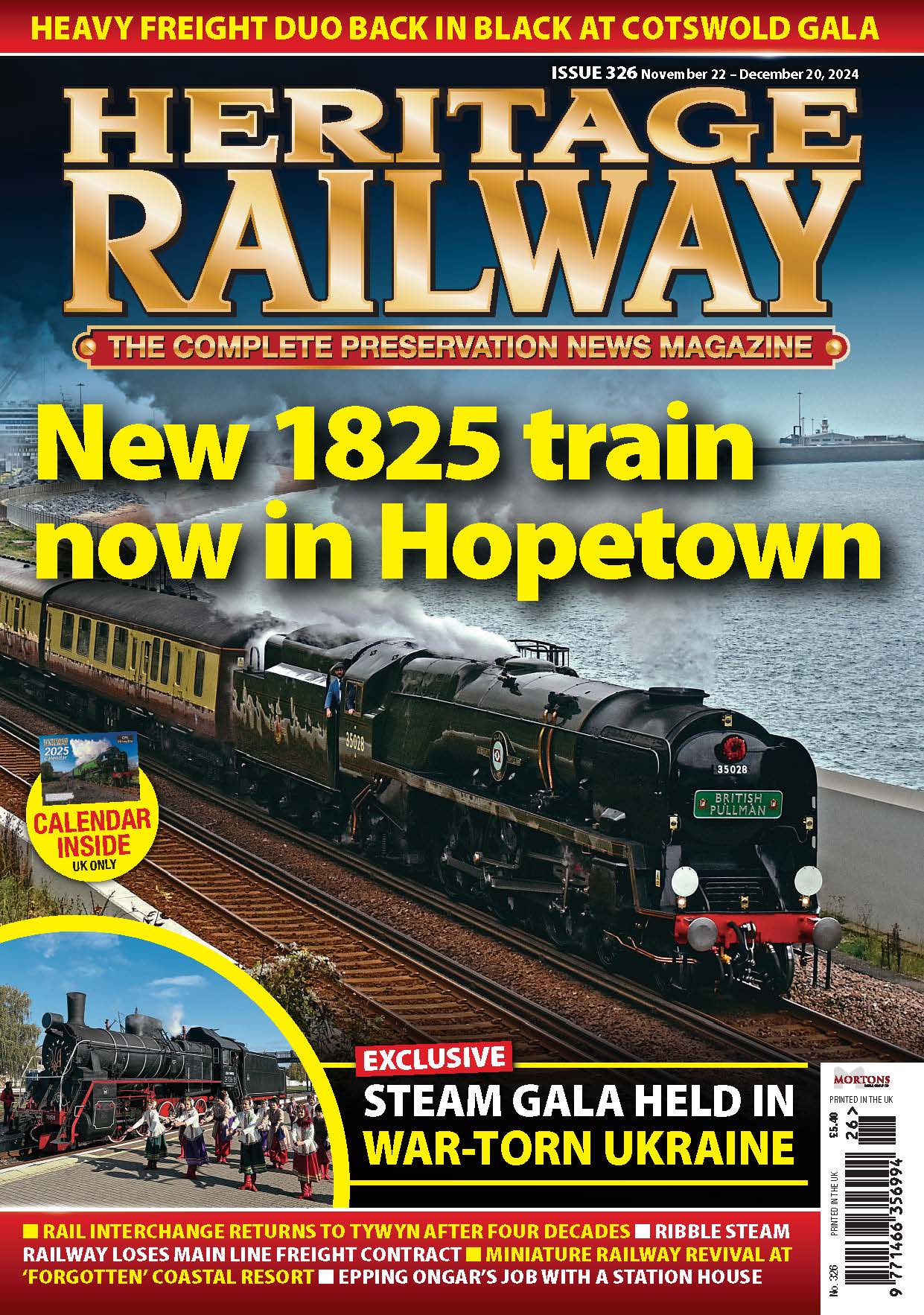Five nameplates from a single collection comprising four GWR examples and a Standard Britannia set the tills ringing at GW Railwayana’s sale at Pershore on July 14, with hammer prices ranging from £3700 to £11,900.
The five-figure realisation was for St. Mawes Castle from No. 5018, which emerged from Swindon works in August 1932 and was withdrawn from Reading (81D) in March 1964. It was the first time either of the locomotive’s nameplates had come up for auction.
Following in the 4-6-0’s wake at £9500 was Charles Dickens from Britannia No. 70033, a December 1952 Crewe product that was withdrawn from Carlisle Kingmoor (12A) in July 1967, its service life of fewer than 15 years contrasting sharply with the Castle’s career of nearly 32 years.
Enjoy more Heritage Railway reading in the four-weekly magazine.
Click here to subscribe & save.
The collection’s next success was Fringford Manor carried by 1939-built, 1965-withdrawn No. 7814 (£6000), and finally County of Oxford (No. 1023) and Runter Hall (No. 7919), at £5800 and £3700, respectively. The County’s cabside numberplate sold immediately after the nameplate to the same bidder for £2000.
Two main line steam nameplates not from the collection also went under Simon Turner’s hammer, that from LNER B1 class No. 61016 Inyala for £6700 and Quentin Durward from GWR Saint No. 2979 for £4900. The latter engine was built at Swindon in 1905 as a 4-4-2 named Magnet, renamed in 1907, rebuilt as a 4-6-0 in 1912, and withdrawn by BR from Newport Ebbw Junction (86A) in January 1951.
Steam didn’t have all its own way in the nameplate category, thanks to Sir Ralph Verney, whose price of £4500 was ahead of the Hall and not far behind the Saint. It was an alloy plate from Metropolitan Railway electric locomotive No. 3 that in 1953 replaced an original brass version on the 1922-built Bo-Bo.
Although the Castle nameplate was the top realisation, there was a second five-figure hammer price, that being £10,400 for a Westcliff-on-Sea totem station sign. This item had the totem fraternity buzzing in the weeks prior to the sale, because of it being an unknown survivor that had been acquired by a member of staff when the station was re-signed in the mid-1950s.
Although way down on Westcliff, the next two totems in the pecking order were the Western Region’s Lye (£2600) and a near identical name, Rye, from the Southern Region (£1600), while the leading target sign was White City from the London Underground (£2000).
Models were led by a trio of 5in-gauge live steam examples, WD 2-10-0 No. 90774 (£3600) and, at £2300 each, GWR Nos. 7817 Garsington Manor and 0-6-0PT 8754.
Top poster was a GWR issue by Claude Buckle promoting Bath (£3000), and still with the GWR, a nameboard from Towyn signalbox fetched £1650.
A 1934 LMS silver presentation key recording the opening of the relocated Leigh-on-Sea station sold for £1400, and other class winners included the smokebox numberplate from GWR No. 1013 County of Dorset (£1600), a circa 1870 Barry Railway 12in dial clock (£1500), and an 83G (Penzance, subsequently Templecombe) shedplate (£920). Prices exclude buyer’s premium of 10% (+ VAT).
“Overall very pleasing and our highest ever sales total,” said Simon Turner.
“Totems have been strong for about 18 months and continue to be so, and clocks, watches and posters also sold well.”
Read more Railwayana News in Issue 245 of HR – on sale now!
Advert
 Enjoy more Heritage Railway reading in the four-weekly magazine. Click here to subscribe.
Enjoy more Heritage Railway reading in the four-weekly magazine. Click here to subscribe.




